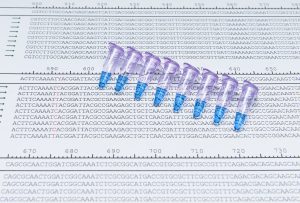 In this blog, we take a look at technical design problems with primer/probes if not designed to the standard required. The design process is a pivotal part of the process in the manufacturing of primer/probe that will enable it to function as well as possible.
In this blog, we take a look at technical design problems with primer/probes if not designed to the standard required. The design process is a pivotal part of the process in the manufacturing of primer/probe that will enable it to function as well as possible.
Good primer design is vital in providing a successful PCR reaction and to ensure quantitative, accurate and interpretable results in your qPCR testing. There are many factors and to take into account when designing the optimal primers for your gene of interest. Here are some tips to consider when designing primers.
Before beginning assay design, think about your gene and the transcript variants you need to capture in your design. It is recommended that you may want to perform BLAST searches to ensure that the sequences are specific to the target.
Why one target in a primer is better than two?
If you are going to choose two targets, two good designs are tricky to come across, if one is a good design and one is a bad design, it may lead to discrepant results so make sure both targets are based on reliable good quality sequence information. The 2-test approach was introduced because once upon a time sequencing was expensive and time-consuming. Now, with SARS-CoV-2 the virus causing the Coronavirus COVID-19 outbreak, sequences are being published around the world, every day, at an unprecedented rate. Our in-house scientists have built a genomics profile of the virus, to track the mutation changes and the specificity of our test. They will know as soon as the kit doesn’t detect even one of these. The question you need to ask is why you need two gene targets? You need to take into account, higher costs, twice the reagents and double the testing time.
Target of the assay
The target of the assay is important. We choose highly conserved regions of a genome in our assay including our Coronavirus COVID-19 CE-IVD, so if the genome starts to accumulate mutations they are less likely to be within a conserved gene. If you have a sequence that you want to use, it’s always worth checking databases, as we do on a regular basis. This enables a thorough check to identify any mutations within the primer/probe targets. Runs of repeated bases greater than 4 mean that could lead to non-specific priming and that could lead to false positives. For example repeated bases like ACCCC or ATATATAT.
If you are designing an assay it is best to pick a region of the genome that has a low mutation rate probability, for example, our COVID-19 kit is specifically designed to target a region that has a VERY LOW mutation rate, as identified by our genomics experts. If you design an assay that targets an area that can mutate more easily it will lead to false negatives. If you double the targets, you double the mutation chances and therefore false-negative chances.
Choosing the right design will decrease the chances of primer-dimers in your testing, which will limit the assay’s function and reduce the sensitivity however the right design will decrease the chances of any forming. One of the ways to avoid this is to use assay design software that avoids templates and primer-dimer structures to improve the efficiency of the PCR.
Loop formations within a design of an assay like the CDC COVID-19 N1 gene causes a predicted hairpin loop that is rejected on the Primer3 design software. These loop formations can cause problems during PCR, leading to lower amplification efficiency and potential false negatives.
TOP TIP
Use qPCR software tools, but the software is only as good as the input. Your assay is only as good as the information you take from the software so knowing how to analyse it correctly is important. When considering gene expression assays, should it detect all isoforms? Does it provide alternative splicing? Int the case of pathogen identification, how homologous are the sequences that you need and are they very similar to sequences that you want to avoid?
We are experts in bioinformatics and assay design, and our bioinformaticians are on hand to assist with any custom requests you have or design questions on our latest COVID-19 assay get in contact [email protected]